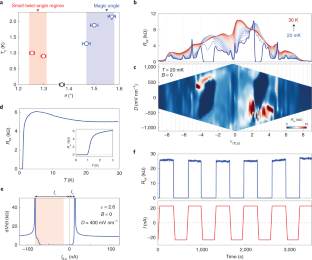ブラウン大学の教員と学生を含む研究チームは、多層グラフェンにおいて磁場のない超伝導ダイオードを作製しました。この開発は、将来の「ロスレス」エレクトロニクスの基礎となる可能性があります。 A research team including Brown University faculty and students created a superconducting diode without a magnetic field in multi-layer graphene, a development that could form the basis for future “lossless” electronics.
2022-08-30 ブラウン大学
従来のダイオードとは異なり、超伝導ダイオードは抵抗がゼロであるため、順方向へのエネルギー損失がない。
さらに研究チームは、単純な電場を用いてダイオードの向きを反転させることにも成功した。
<関連情報>
- https://www.brown.edu/news/2022-08-30/superconductor
- https://www.nature.com/articles/s41567-022-01700-1
小ねじれ角三層グラフェンにおける零磁場超伝導ダイオード効果 Zero-field superconducting diode effect in small-twist-angle trilayer graphene
Jiang-Xiazi Lin,Phum Siriviboon,Harley D. Scammell,Song Liu,Daniel Rhodes,K. Watanabe,T. Taniguchi,James Hone,Mathias S. Scheurer & J.I.A. Li
Nature Physics Published:15 August 2022
DOI:https://doi.org/10.1038/s41567-022-01700-1

Abstract
The critical current of a superconductor can be different for opposite directions of current flow when both time-reversal and inversion symmetry are broken. Such non-reciprocal behaviour creates a superconducting diode and has recently been experimentally demonstrated by breaking these symmetries with an applied magnetic field or by the construction of a magnetic tunnel junction. Here we report an intrinsic superconducting diode effect that is present at zero external magnetic field in mirror-symmetric twisted trilayer graphene. Such non-reciprocal behaviour, with sign that can be reversed through training with an out-of-plane magnetic field, provides direct evidence of the microscopic coexistence between superconductivity and time-reversal symmetry breaking. In addition to the magnetic-field trainability, we show that the zero-field diode effect can be controlled by varying the carrier density or twist angle. A natural interpretation for the origin of the intrinsic diode effect is an imbalance in the valley occupation of the underlying Fermi surface, which probably leads to finite-momentum Cooper pairing and nematicity in the superconducting phase.



